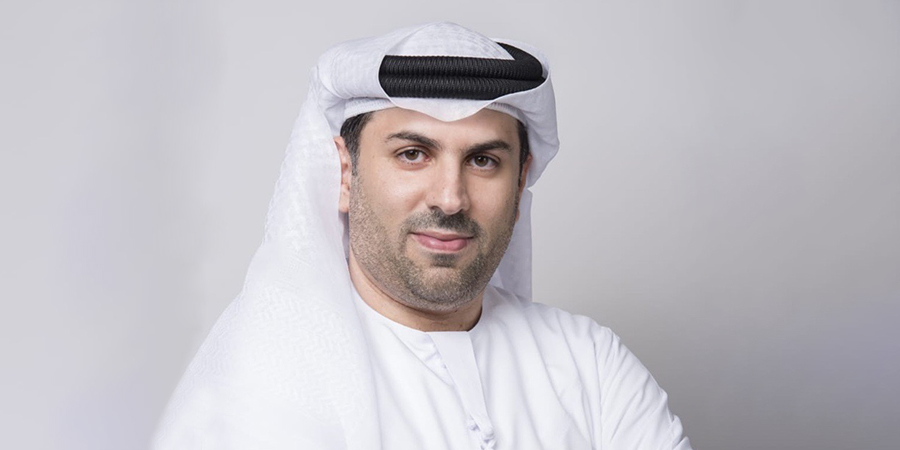The Telecommunications and Digital Government Regulatory Authority (TDRA) recently issued the third edition of the Telecommunications Network Box Specification Manual for buildings, which sets out the technical specifications and standards adopted for the design of internal and external networks in new buildings and areas.
The manual aids in the design of infrastructure for urban projects, especially in the field of fiber-optic network deployment, and sets standards that ensure all new buildings and areas are equipped with physical infrastructure that is capable of hosting high-speed networks as well as access points that network providers can easily interface with.
H.E. Eng. Mohammed Al Ramsi, TDRA’s Deputy Director General of the Telecommunications Sector, emphasized the importance of updating the manual due to its significant impact on telecommunications infrastructure development across the country. This update is expected to enhance the overall quality of life, particularly benefiting immediate users.
He outlined that, "The release of the updated Building Telecommunications Network Specification Manual marks a qualitative addition to the regulatory procedures of the telecommunications sector, thus, helping drive the transition towards smart cities of green and environmentally-friendly buildings. This, in turn, fosters [the] UAE's leadership in several indicators relating to infrastructure, foremost of which is FTTH, in which the UAE has been ranked first globally over the past eight years.”
Positive Impact of the Manual
The updated Building Telecommunications Network Specification Manual is an important reference for the employment and deployment of technology in new buildings and projects, directly affecting the prompt and quality access to services by subscribers. It outlines the essential conditions for designing telecommunications infrastructure, including security specifications, scalability, technological compatibility, and system integration. These guidelines ensure that infrastructure efficiently meets these requirements, providing residents and users with the best possible connectivity experience.
The implementation of the manual will reflect positively on all parties, as it will reduce the size and cost of in-building telecom boxes by 30%; reduce room spaces, sizes and costs by 50%; and will significantly reduce energy use and developer costs by at least 50%.
One preparatory study of the manual showed that it contributes to saving an estimated AED 13.5 million annually for developers and service providers by standardizing the specifications needed to operate in the sector.
Moreover, the manual supports the UAE's leadership and its continued ranking as the top country globally for fiber-to-the-home (FTTH) network connectivity and penetration, as reported by the Fiber Connect Council MENA.
The manual also promotes the construction of smart and green buildings, recommending specifications and solutions that are suited to modern premises.
Targeting Various Stakeholders in the Telecom Sector
H.E. Eng. Al Ramsi added, "We are fully confident that this manual will be effectively implemented thanks to the great cooperation we have seen among different parties. We hope that the manual document will receive extensive interaction by stakeholders through feedback, as the manual will remain open for updating and development to meet everyone's expectations, all in a way that serves our common goal: to work on establishing the “Forward Ecosystem” in line with We the UAE Vision 2031.”
The updated Building Telecommunications Network Specification Manual issued by the TDRA includes qualified subsidiaries of “Etisalat” and “du”, and combines the requirements of the Dubai Building Code (DBC) with the requirements of the Abu Dhabi Quality and Conformity Council (QCC). The requirements of municipalities were also taken into consideration at the preliminary consultation stage during the preparation of the manual, making it suitable for all Emirates of the state.
The manual is intended for various stakeholders in the telecommunications sector, starting with telecom network operators, as the manual ensures that in-building telecom rooms meet security, environmental controls and accessibility requirements, helping to install, maintain and operate networks more seamlessly.
The manual also targets real estate developers and building owners as it encourages them to follow the guidelines outlined in the manual for constructing telecom rooms that meet regulatory standards. This ensures expedited approvals, avoids costly reworks, and ensures buildings are ready to connect to service provider networks.
Finally, the manual is designed with building users in mind. Properly designed telecom rooms create a reliable infrastructure, ensuring the delivery of desired services to various buildings. This, in turn, benefits companies, residents, building occupants, and visitors who rely on varied services according to the nature of their business and needs.
Read More: TDRA Explores Real World Digital Innovation Scenarios on WTISD
Read More: TDRA Supports National Digital Accessibility Policy










